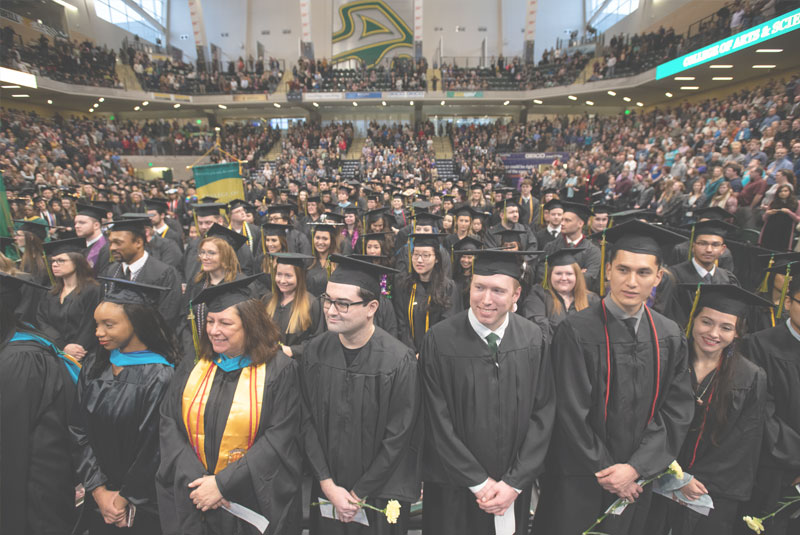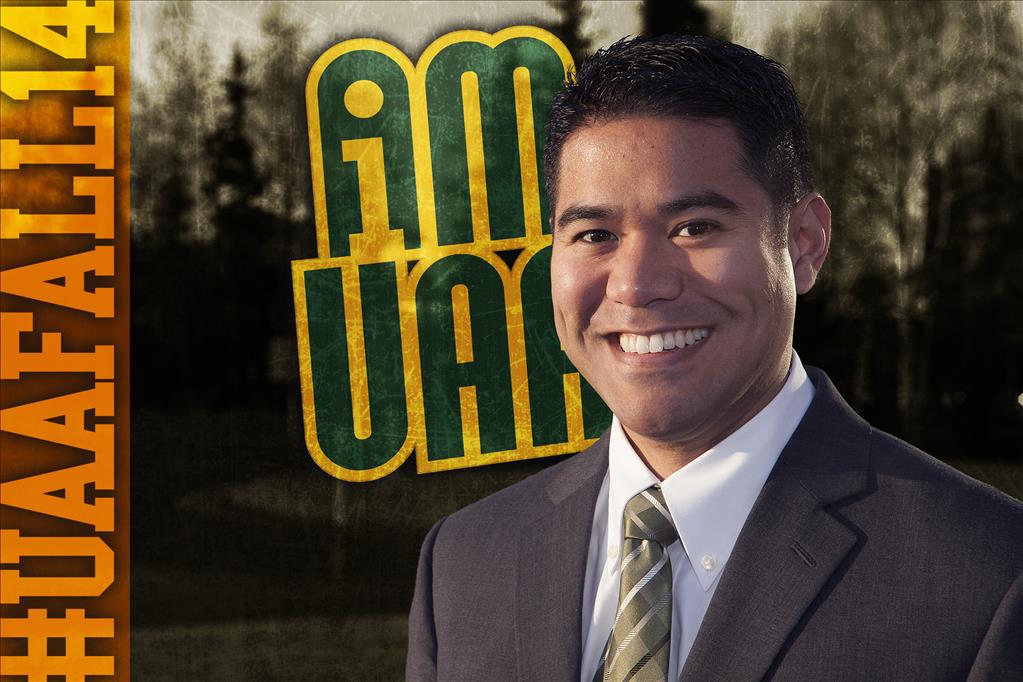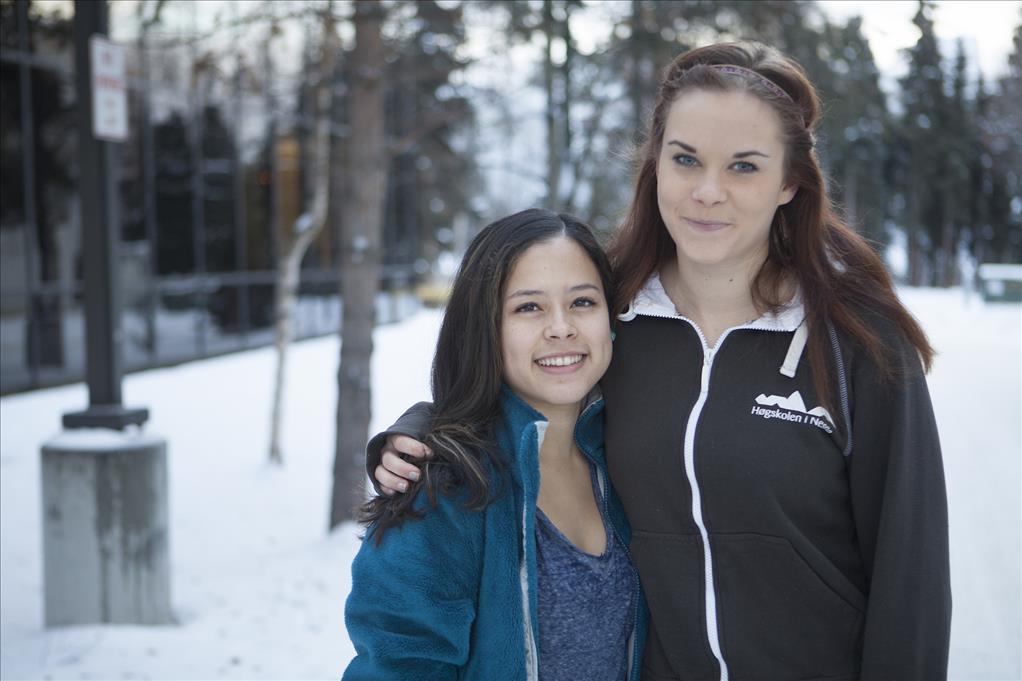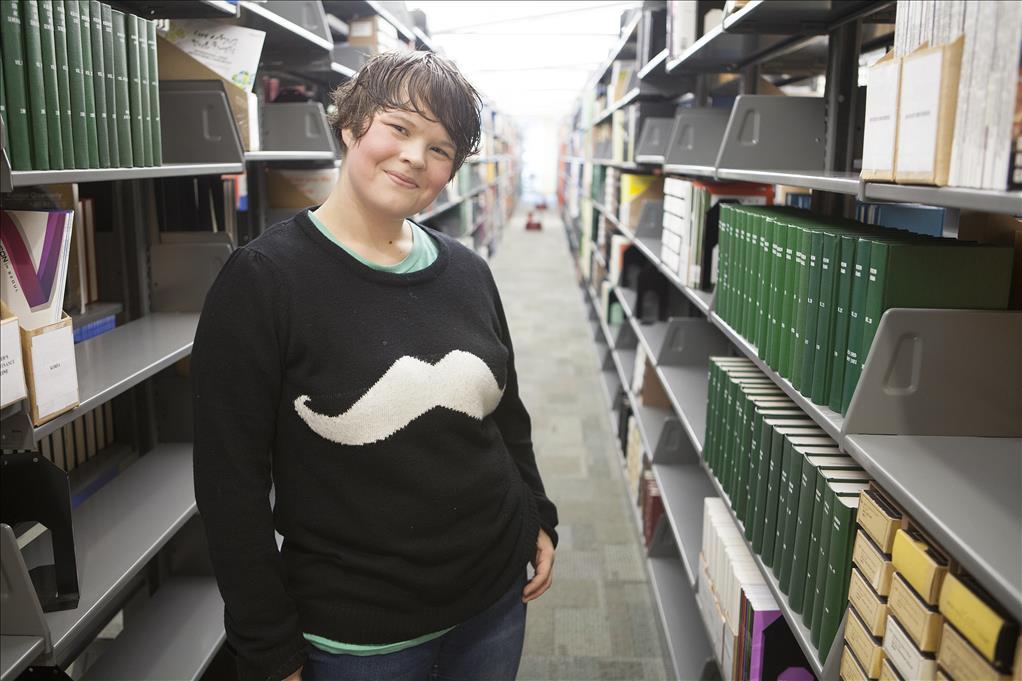Faculty Spotlight: Dr. Stephen J. Langdon
by Jamie Gonzales |
Professor Emeritus, Department of Anthropology Hometown: Anchorage, Alaska Fun Fact: Is a West High School graduate.
Earlier this month, well wishers surrounded Steve Langdon at a retirement party, recognizing his contributions to academia and anthropology with appropriate gifts-a crest blanket from Sealaska Corporation, a Tinaa (Tlingit copper symbol) from his students, an Inupiat art piece carved from whale bone-and shared stories. The outgoing chair of the Department of Anthropology has racked up a few in his 38 years at UAA and more than four decades of anthropological research in Alaska. Along with five faculty colleagues across UAA, Steve was granted professor emeritus status at commencement. That's code for "not really retired."
"As I said to somebody recently, I haven't retired retired. I already have book plans, report plans, paper plans, research plans," said Steve. He'll continue serving on some student thesis committees as well.
But, freed from administrative tasks and a regular teaching schedule, he does entertain some thoughts about gearing down.
"I contemplate getting a 30' boat and just cruising around on my own, exploring," he said. "I've always loved to do that."
Steve has been in Alaska since he was eight years old when his family moved here during territorial days-in 1958-so his father could establish the region's first mental health facilities.
He's seen Alaska through some important historical moments-statehood, the Good Friday Earthquake, the discovery of oil in Prudhoe Bay, the Alaska Native Claims Settlement Act and 41 Iditarods, to name just a few. What seems like an epic timeline is really a blip if, like Steve, you've immersed yourself studying the culture and history of Alaska's first people.
Commercial fishing and academia
After graduating from West High School, Steve attended Stanford University where he majored in psychology and minored in anthropology as an undergraduate. In the summer between his sophomore and junior years, he took a job as a counselor for Alaska's Upward Bound program.
"It was a program that brought in promising high school students from villages around the state. I got to meet young people from all over Alaska, all the Native communities-Athabaskan, Inupiaq, Yupik, Tlingit-they were all there in the program and I became fascinated," he said.
By his junior year, he knew he wanted to pursue anthropology in graduate school, so he forged ahead without stopping for breath between his undergraduate and graduate studies.
Another summer job, this time as a deckhand aboard a commercial fishing vessel out of Craig, Alaska, sparked a career research interest in studying the changes in fishing practices among Alaska Natives in southeastern Alaska.

Steve Langdon receives a gift from Sealaska, presented by Patrick Anderson. Photo by Kathleen Behnke.
"I fished for three seasons on boats captained by Tlingit and Haida Native men," he said. "I did archival and oral interviews on how things had changed over the course of time since the commercial industry began in 1878."
In 1985, he and his colleagues began systematically identifying pre-contact fishing systems in southeastern Alaska.
"Often there's the notion that what you saw at the time of contact was the way things always were," he said.
"I found one site, called Little Salt Lake, which I call the Tlingit R&D center. It's extremely well-protected by a narrow channel, so I was able to reconstruct over 2,000 years of sequence of changes in terms of how these traps were modified."
His research took him all over Alaska and in 1986, his book, The Native People of Alaska, was first published. It's currently in its fifth edition and frequently used as a tool for schools and other organizations to further understanding of Alaska's indigenous peoples.
Everyone has a fish tale
Alaska's fish tales are everything from social currency at a bar to fundamental cultural myths.
Steve's starts on a commercial fishing boat. As a deckhand, he noticed the Native crew would shout "Ayo!" when they spotted salmon jumping.
"I always just thought they were telling the captain they saw a fish jumping, but no. What you're doing is, just like you say hello to someone, you are acknowledging that this other person is in your presence and that they are valued," he said.
The Tlingit, he said, afford salmon the same respect given to a person. Their worldview is illustrated in a myth about a careless boy who gets an intimate look at life among the Salmon People. In Steve's interviews with Tlingit elders to further his understanding of relational sustainability, versions of this story came up repeatedly.
Here's the story, as he relayed:
This young boy tells his mother he's hungry and she says, "Go get a piece of dried fish." He gets a piece of dried salmon and finds mold on it and throws it on the floor. This is absolutely anathema-you never do anything to insult. So his mother says, "Don't you ever do anything like this!" He gets upset and runs out of the house and goes down to the shore to tend some of his traps. He gets caught in his trap and is going to drown, but the chief of the Salmon People sees him and he tells the salmon, "Go get that boy." So they do and he's transported off shore down to the bottom of the sea where the Salmon People live. He goes into their village and sees when they take off their skins, they are persons, just like himself. While he's there living with them he learns a large number of things. The salmon chief teaches him how they are supposed to relate to salmon and he spends a year there. And then they return. He says, "Well it's time for us to go back to the stream, lets get in our canoes." So they get in their canoes and they head back toward the stream. As they reach the stream where his mother and father are processing salmon, the chief tells the salmon boy, "Stand up to see where we are." Not knowing that he's a salmon, he stands up in the canoe, the equivalent of jumping out of the water. So he's jumping out of the water in the vicinity of where his mother and father are. He sees where they are. The salmon chief says, "Go on in there now." So he goes in there by where his father is gaffing fish. His father gaffes him and he turns him over to his mother to begin processing. The mother takes her knife and she inserts it into the gills, which is the first cut and she discovers there's a copper necklace in there. Well, the copper necklace is what the boy was wearing when he left the house and went down to the stream. She says, "What does this mean?" They went to the shaman and asked, "What do we do?" He says, "Put the fish up high in your house overnight." The next morning, the boy had returned. The salmon had transformed back into a person and at that point then, he told them all of the reasons and the ways in which they were to relate to salmon as people.
Introducing UAA to 'The Rise of Civilization'

Graduate student Yoko Kugo presents Professor Langdon with a gift from the anthropology graduate students. Photo by Kathleen Behnke.
When Steve retires retires, he'll have left an indelible mark on UAA's course catalog, a legacy he's proud to admit.
"One of the things that was really central to our department was the creation of a course called The Rise of Civilization," he said. In the early 1980s, UAA students weren't required to dig beyond American History and Western Civilization. That blank spot in general education requirements begged for a solution, so Steve led the charge from the Department of Anthropology and crafted a new course.
"The Rise of Civilization course is the only place where you're going to get exposure to the systemic evidence for what we call hominid evolution," he said. "From my vantage point, anybody with a collegiate education and a bachelor's degree who's not exposed to that is not educated. I'm not telling people they have to believe it, but, by god, you'd better have confronted the evidence."
He says the course is also important in demonstrating to students that complex society, "civilization," was developed in many parts of the world and provides them with tools to learn about humanity as a global phenomena.
In 2012, Steve was awarded the Edith R. Bullock Prize for Excellence, a prestigious award from the University of Alaska Foundation for excellence in his work in academia and throughout Alaska. Read more about his achievements here.
 "Faculty Spotlight: Dr. Stephen J. Langdon" is licensed under a Creative Commons Attribution-NonCommercial 4.0 International License.
"Faculty Spotlight: Dr. Stephen J. Langdon" is licensed under a Creative Commons Attribution-NonCommercial 4.0 International License.
















